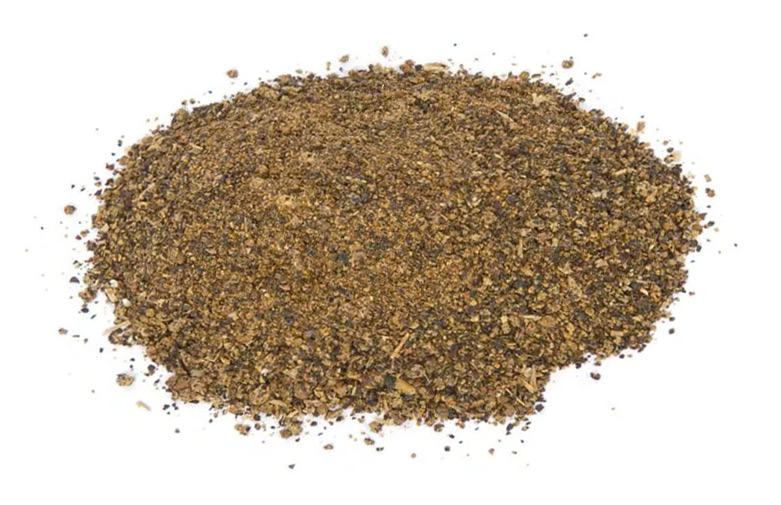
Rapeseed Meal
What is rapeseed meal? It is a vegetable protein feed ingredient produced from rapeseed oil extraction. We offer rapeseed oil with 36% crude protein content. It is an ideal protein supplement available to use as animal feed.
Rapeseed oil has a well-balanced amino acid profile and competitive pricing. Hence, it is an excellent animal feed available for cattle, pig, and poultry. We source rapeseed oil directly from leading oil mills. It undergoes thorough quality checks to ensure purity, freshness and nutritional standards. It is available in bulk shipments or 50kg polypropylene bags delivered to ports worldwide.
With decades of experience in Agri-commodities trading, Manat Group aims to provide sustainable vegetal protein solutions for feed manufacturers globally. Get in touch with our team to source reliable volumes of non-GMO, gluten-free rapeseed meal. We also provide the best rapeseed meal price to you.
With decades of experience in Agri-commodities trading, Manat Group aims to provide sustainable vegetal protein solutions for feed manufacturers globally. Get in touch with our team to source reliable volumes of non-GMO, gluten-free rapeseed meal. We also provide the best rapeseed meal price to you.
Characteristic
Protein Content
Sand & Silica
Moisture
Fiber
Packing Options
GMO Status
Primary Use
Key Advantages
Cautions
Crude Fiber Impact
Protein Content
Sand & Silica
Moisture
Fiber
Packing Options
GMO Status
Primary Use
Key Advantages
Cautions
Crude Fiber Impact
Main Characteristics of Rapeseed Meal
Let’s learn more about rapeseed meal specification.
Details
38% min
2.5% max
12% max
11% max
50kg PP Bags or Bulk
Non-GMO
Animal feed for cattle, pigs, poultry
Cost-effective, Non-GMO, High sulfur amino acids, Alternative to soybean meal
Not suitable for young animals or nursing sows
High fiber content, may reduce digestibility (balance with other feeds)
38% min
2.5% max
12% max
11% max
50kg PP Bags or Bulk
Non-GMO
Animal feed for cattle, pigs, poultry
Cost-effective, Non-GMO, High sulfur amino acids, Alternative to soybean meal
Not suitable for young animals or nursing sows
High fiber content, may reduce digestibility (balance with other feeds)
How to Use Rapeseed Meal
Rapeseed meal protein content is high. As a result, you can find numerous rapeseed meal uses. Moreover, it is a cost-effective option for incorporating high-quality vegetable protein across all types of livestock and aquaculture feeds.
Rapeseed meal can replace around half of soybean meal. Being gluten-free, it does not compact in the rumen while its protein is well-used for milk and meat production. The moderate fiber content also stimulates rumination. It is one of the most prominent benefits of rapeseed meal in soil.
Ruminant Feeds
Benefits of Rapeseed Meal Over Other Animal Feed
For pigs and poultry, composition of rapeseed meal is best limited to 10-15% of the feed mix as the only protein supplement or partially substituted for soybean or other oilseed meals. Its well-balanced amino acid profile supports growth and performance comparable to soybean meal-based diets.
Monogastric Feeds
In aquaculture and pet foods, rapeseed protein contributes to optimal rapeseed meal feed conversion and plumage/coat quality. Extruded pet food and fish feed pellets can contain over 30% rapeseed meal.
Aquaculture and Pet Foods
Compared to soybean meal, rapeseed meal is produced domestically across Europe, China, India and Canada. In fact, rapeseed meal for animal feed is a steady supply and avoiding dependence on imports. Rapeseed meal price EU is roughly 5-15% cheaper than soybean meal on average. Hence, you don’t need to think twice before using rapeseed meal in dairy cows.
Rapeseed meal also has nutritional advantages being completely free of GMO or potential allergens like gluten. The lower fiber and glucosinolates versus soybean meal make rapeseed a more digestible choice.
With growing consumer demand for sustainably grown, non-GMO and local feeds, rapeseed meal checks all boxes. It performs equal to or better than soybean meal across livestock species while supporting homegrown, ecologically sound oilseed production. With Manat Group you gain access to large volumes of quality rapeseed meal fully traceable to source.
Rapeseed meal also has nutritional advantages being completely free of GMO or potential allergens like gluten. The lower fiber and glucosinolates versus soybean meal make rapeseed a more digestible choice.
With growing consumer demand for sustainably grown, non-GMO and local feeds, rapeseed meal checks all boxes. It performs equal to or better than soybean meal across livestock species while supporting homegrown, ecologically sound oilseed production. With Manat Group you gain access to large volumes of quality rapeseed meal fully traceable to source.
Daily Feed Recommendations for Rapeseed Meal
The optimal inclusion rates depend on the nutrition requirements of the livestock species and production purpose. Work with your animal nutritionist to formulate balanced feeds incorporating rapeseed meal. Due to the affordable price of rapeseed meal, you will not encounter any issues when feeding your animals with it.
Cattle Feedlot Diets
- Beef - Fattening cattle can consume up to 6 lb. rapeseed meal per head when replacing around half the soybean meal in high concentrate diets. This provides adequate fermentable fiber as well.
- Dairy - Include 4-5 lb. rapeseed meal for high yielding dairy cows, by replacing up to 40% of soybean meal. Can help maintain butterfat levels in milk.
- Calves & Heifers - For growing calves after 3 months of age, heifers and dry cows, incorporate 2-3 lb. rapeseed meal into the daily feed mix. Gradually transition to higher amounts.
Small Ruminants & Other Ruminants
- Sheep - Ewes, rams and lambs can be fed 0.5-1 lb. organic rapeseed meal per head daily, substituting part of soybean meal or grain mixes. Can assist wool growth.
- Goats - Replace around 30% of protein sources with 1⁄2 to 1 lb. rapeseed meal per goat based on growth stage and production cycle. Prevents loose feces.
- Alpacas & Llamas - Young and mature animals can consume 1⁄4 to 1⁄2 lb. rapeseed meal per day as part of mixed rations. Improves fiber quality.
- Buffaloes - Replace part of oilseed mix with 2-4 lb. rapeseed meal in buffalo rations depending on age and purpose. Boosts milk fat.
Pigs & Poultry Feeds
- Piglets & Layers - Include limited rapeseed meal in starting piglet and layer poultry rations at 0.1-0.25 lb. per head daily in well-balanced feed.
- Fatteners & Broilers - Up to 0.5 lb. rapeseed meal per finisher pig or broiler chicken can be added on top of a soy-based diet for cost savings.

How to Transport and Store Rapeseed Meal
- Transport rapeseed meal in clean, sealed containers like flexi tanks, isotainers or flat racks. Moisture loss and contamination risks are higher. As local rapeseed meal suppliers, we provide them to you in appropriate containers.;
- Ensure containers and conveyances are thoroughly cleaned and dried before loading meal. Check for pest infestation. As rapeseed meal exporters, we pay special attention to this;
- Recommended for large buyers with storage and material handling infrastructure.
Bulk Shipping
- Pack in new 50kg polypropylene bags with inner polyethylene lining. Bags are sealed securely to prevent spillage;
- PP bags prevent moisture ingress and provide ease of handling compared to jute bags;
- Palletize bags and shrink-wrap for stability during transport. Facilitates stacking inside containers.
Bags
Transportation
Storage
Shipments
- Inspect consignments thoroughly before dispatch from production facility and at receipt;
- Monitor temperature and humidity levels inside containers, especially on long voyages;
- Small bags loaded onto pallets should be covered properly and secured firmly within transport vehicles.
Documentation
- Ensure shipping documents like B/L, product specifications, COA, COO, MSDS are provided;
- Declare meal appropriately as ‘Rapeseed Meal – Not for Human Consumption’ and mention production date.
Adhering to these guidelines preserves nutritional quality and prevents feed losses due to moisture, pests or handling errors. Reach out to us for further rapeseed meal management advice!
Warehouses
- Store rapeseed meal bags or totes away from walls on elevated pallets and under covered sheds. Should be weatherproof;
- Control rodents and bugs via traps, proper sanitation and surface spraying if required. Avoid contamination with toxic chemicals;
- Restrict moisture contact by repairing any leakage and providing adequate aeration in the storage area. Monitor for unusual heating.
On-Farm
- When storing bulk meal in feed bins, handle carefully to avoid fine particle accumulation. Follow FIFO system;
- In bagged form, keep rapeseed meal away from damp floors and walls. Place cardboard between bag layers if stacked;
- Typical shelf life is up to 6 months under cool, dry storage conditions as specified above.
How to Feed Cattle with Rapeseed Meal
- Replace 30-50% of protein obtained from soybean meal with rapeseed meal in total mixed rations (TMR) for dairy cows and fattening cattle;
- Feed 2 to 6 lb. rapeseed meal per mature cow daily depending on milk yield potential;
- For growing calves and heifers, add 1 to 3 lb. rapeseed meal gradually in daily diet.
Amounts
Growing & Fattening Cattle
- For heifers, steers and bulls in feedlots provide high energy rations with rape meal;
- Offer 2-4 lb. rape meal with grain or beet pulp based concentrates supporting weight gain goals.
- Analyze nutrient composition of byproducts like distillers grain before balancing rations;
- Formulate TMR using computer-aided models for precision feeding results;
- Work closely with a qualified cattle nutritionist when substituting with rapeseed meal.
Following these rape meal feeding guidelines, cattle ranchers can cost-effectively enhance productivity of beef and dairy herds. Contact our to get rapeseed meal you need today. We are specialists in sustainable rapeseed meal production.
Other Considerations
- Introduce rapeseed meal slowly over 2 weeks when replacing other oilseed meals to allow rumen microbes to adapt;
- Blend with forages and grains when formulating TMR. Ensure homogenous mixing for consistent intake;
- Balance diets for sufficient fiber and reduce starch sources if including over 4 lb. rapeseed meal per head.
Transitioning & Mixing
Cows in Production
- Include quality forage like hay and silages covering at least half the TMR for production cows;
- Add 4-6 lb. rapeseed meal along with cereal grains, mineral mixes and feed additives tailored to lactation needs.



